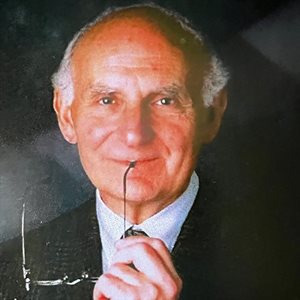 Professor Harold Lambert was a clinical consultant and St George’s first professor of microbial disease. He trained at Cambridge and University College Hospital, completing national service near Salisbury where he met his wife, Joan Richley, before returning to London in 1963 to work as a consultant physician and later Professor at St George’s.
Professor Harold Lambert was a clinical consultant and St George’s first professor of microbial disease. He trained at Cambridge and University College Hospital, completing national service near Salisbury where he met his wife, Joan Richley, before returning to London in 1963 to work as a consultant physician and later Professor at St George’s.
Keeping clinical infectious disease research alive
As Professor Lambert became a consultant, powerful new antibiotics heralded the elimination of infections like meningitis, whooping cough, and gastroenteritis. But Harold remained fascinated by the mechanisms of disease, concerned that antimicrobial agents could be misused. He began to study the effects of antibiotics as well as the conditions they treated. This led to a collaboration with fellow physicians Lawrence Paul Garrod and Francis O’Grady to create the leading textbook on antibiotic use: Antibiotic and Chemotherapy. Having witnessed George’s Orwell’s death from tuberculosis, Professor Lambert played a key role in developing new treatments, such as pyrazinamide, for the disease. He published extensively on respiratory conditions, infectious diseases, and the optimal use of antibiotics and was a driving force behind the academic unit which has since become the Institute for Infection and Immunity (II&I) at St George’s School of Health and Medical Sciences.
Teaching well into retirement
Professor Lambert continued to teach beyond his official retirement, delivering lectures at the London School of Hygiene and Tropical Medicine where his extensive experience with infant pneumonia, gastroenteritis and smallpox made powerful contributions to the course. He was a witness to the decline of smallpox and may have diagnosed the last case to enter the country.
Professor Lambert and his wife, Joan, were the creative force behind a water garden at St George’s Hospital, enabling patients and their families to escape the clinical environment.